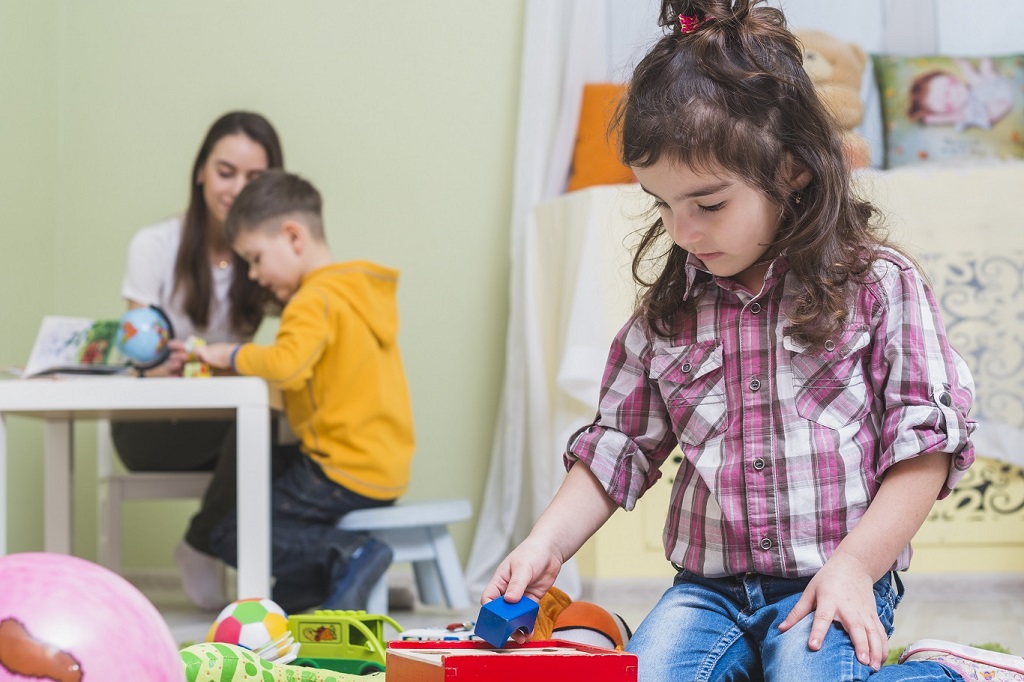
Try these stress busting activities to help your whole family – even your kids – manage the stress and anxiety of daily life.
Days are busy. Work, school, activities, and more can sap our time and energy. So much so that “stress busting” has become big business. One can readily find meditation apps, adult coloring books, and even fidget spinners, all promoting stress relief for busy adults craving downtime or ways to decompress.
Children, however, naturally seek out and engage in experiences that calm the nervous system. They spend hours with an array of soothing activities, like digging in the sand, running and skipping around, climbing trees or jungle gyms in the outdoors, or even more simply spreading paint around a paper with their fingers.
We adults can take cues from children when it comes to methods for relaxation, but we also have some tips to offer our children. Consider the following experiences when your family needs some stress management ideas.
What Activities Reduce Stress?
- Sensory Play
- Movement
- Outdoor Time
- Meditation and Guided Relaxation
- Yoga
Family Stress Busters
Sensory Play: Good old-fashioned, simple materials such as water, sand, and play dough are long-time favorites of children. Sensory play is also an integral part of a quality early childhood education. And with good reason—the tactile experience is soothing on the nervous system. Spending time with your child rolling, flattening, and pounding play dough creates an easy way to add more sensory experience to your downtime or playtime—not only as a low-cost, low-effort way to spend time together, but all that play dough action will actually help you feel calmer afterwards.
Movement: Regular exercise has many benefits—it builds strength and cardiovascular health, releases endorphins, and improves sleep, all of which lead to decreased stress and anxiety . Even short bursts of movement offer benefit, and moving as a family offers a feeling of connection, which has also been linked to reduced stress. So, join your children in a quick game of tag or a living room dance party when you’re short on time; and shoot hoops, take the dog on a long walk, or find a family-friendly bike trail when you have more time for longer stress-relieving outdoor recreation.
Outdoor Time: Creating a relationship with nature has its benefits. It whisks us away from our immediate cares and responsibilities, and beckons us to slow down and appreciate the unique beauty of the scents, colors, and textures of the world around us. Even if it is only for five minutes in the backyard, spend a bit of time each day outside aside from the hustle and bustle of commuting from the office or the child care center. It can reset and recharge each family member after a hectic, even overactive, day indoors.
Meditation and Guided Relaxation: Relaxing and controlling breath, body, and mind is something that children can learn and harness to gain control in stressful situations. The benefits gained from short meditation exercises will carry over into multiple arenas of life. Start with simple techniques at nap or bedtime: while lying flat on your backs, talk your child through a guided relaxation sequence. Start at the top of the body and instruct your child to tighten and release the muscles in the face and head, then move onto the neck and shoulders, working all the way through to the feet and toes. Afterwards, spend a few minutes in quiet stillness. At first only one or two minutes may be possible, but the time may increase with repeated sessions. Meditation and relaxation will not only bring calm to your bedtime or nap routine, but will also encourage mindfulness in your child.
Yoga: The combination of movement, strength building, stretching, and a focus on breath, makes yoga a terrific stress reliever for the entire family. It helps to build flexibility, coordination, body awareness, and to create a sense of calm and relaxation that extends beyond the experience. When adding yoga as a stress management tool, keep in mind that the objective is not a lengthy power yoga session marketed to adults, but a simple, obtainable practice for all family members.
Though it may seem next to impossible some days, try to participate in at least one or two activities you enjoy on a regular basis. It may help to schedule this time in your day, just as you would a doctor’s appointment or play date. By making time for what you enjoy—and sharing it with those you love—you will feel more joy amid the craziness of everyday life…and so will your children.
